When it comes to recreational vehicles, there are a lot of different sizes and types to choose from. But one of the most common questions that people have is about how wide they are. How Wide Is an RV? can vary significantly depending on the type and size of the vehicle. In this article, we will provide a guide to the width of different types of RVs, as well as some tips.
Table of Contents
Why Does Your RV Width Matter?
There are a few reasons why the width of your recreational vehicle (RV) is important.
If your RV is too wide, it may extend into another lane of traffic and cause an accident. It’s also important to be aware of the width of your RV when you’re parking or backing up, as you don’t want to damage your RV or any other vehicles around you.
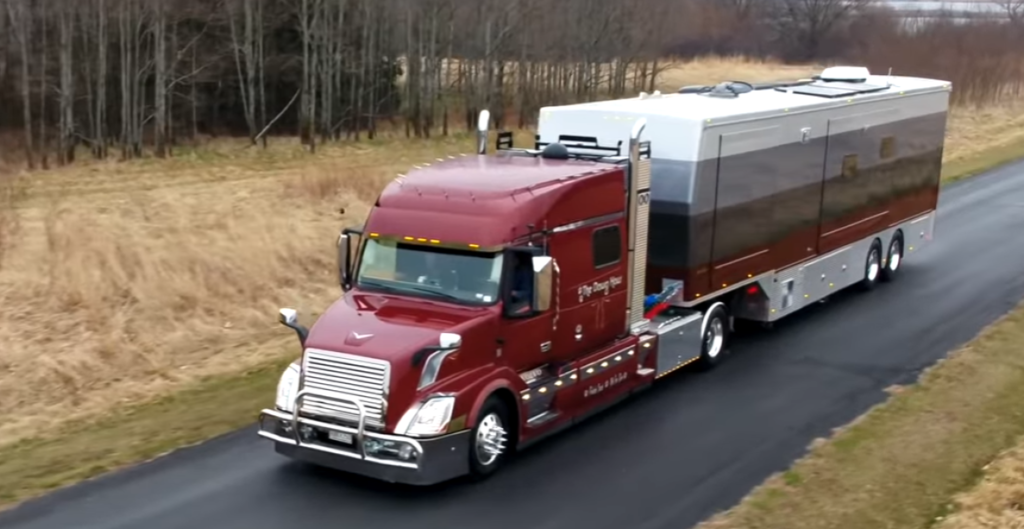
Another reason the width of your RV matters is that different states have different maximum width limits for vehicles on their roads. Be sure to check the regulations in each state that you’ll be traveling through to avoid getting a ticket (or worse).
Finally, some campgrounds and parks have restrictions on the width of RVs that they allow. This is usually to prevent damage to the campground’s roads and sites, so it’s important to check before you go. [1]
State Road Regulations
As we mentioned, each state has different laws and regulations regarding the width of vehicles on their roads. In general, the maximum width for an RV is 102 inches. However, there are some states with special exceptions. For example, in Minnesota, the maximum width for an RV is 105 inches.
Driving and Maneuvering on City Streets
The average RV is eight feet wide. Some RVs can be as narrow as six feet and some can be up to twelve feet wide. The width of your RV will determine how easy it is to drive and maneuver on city streets.
If you’re driving an RV that’s less than eight feet wide, you’ll likely have no problem maneuvering on streets. However, if your RV is wider than eight feet, you’ll need to be extra careful when making turns or changing lanes. You may also want to avoid parking in tight spaces.
It’s important to know the width of your RV so that you can drive and park safely on city streets. Be sure to measure your RV before hitting the road!
Storing Your RV
Your RV can be stored in a few different ways.
If you live in an area with extreme weather conditions, consider storing your RV indoors to protect it from the elements.
If you opt for outdoor storage, make sure the facility is well-lit and has security cameras to deter thieves. You should also cover your RV with a tarp to protect it from the sun and rain.
Indoor storage is a great option if you have space in your home. Many people choose to rent a storage unit specifically for their RV. This option can be more expensive, but it will keep your RV safe and sound indoors.
Whatever option you choose, make sure you do your research to find the best storage solution for your RV.
Storing your RV properly will prolong its life and keep it in good condition for years to come.

What Is the Standard Width of an RV?
The standard width is about 90-92 inches. However, the width of RVs can range from 96 to 120+ inches. The type of RV you have will affect the width, as well as the length and height.
Here are some common types of RVs and their dimensions:
- Class A motorhome: 96-102 inches
- Class B motorhome (van): 80-90 inches
- Class C motorhome: 102-120 inches
- Fifth wheel trailer: 120-160 inches
- Travel trailer: 96-160 inches [2]
What Is the Maximum Width of an RV?
The maximum width of an RV is 102 inches, which includes the mirrors. Some RVs can be as narrow as 64 inches without the mirrors. [3]
Most campgrounds have roads and sites that are designed for vehicles up to a certain width, so it’s important to know the dimensions of your RV before you hit the road. If you’re not sure how wide your RV is, you can always measure it yourself or look up the specifications online.
Here are some things to think about while planning your journey.:
- The wider your RV, the more difficult it will be to maneuver in tight spaces. If you’re not comfortable driving a large vehicle, you may want to consider renting a smaller RV or opting for another type of accommodation.
- The width of your RV will also affect the price of your campsite. Some campgrounds charge more for wider RVs, so be sure to ask about size restrictions when you’re making your reservations.
- Wider RVs can also have problems fitting into standard parking spaces, so be prepared to do some extra maneuvering when you’re looking for a place to park.

How Wide Are RVs With Slide-Outs?
Some RVs have a single slide-out, while others have multiple slide-outs.
When extended, the width of an RV with slide-outs can be as much as 12 feet wide. When not in use, the width of most RVs with slide-outs is about 96 inches, or eight feet. This is the same width as most standard home doorways.
Average RV Width According to Class
- Class A: 8 to 9 feet
- Class B: 6 to 7 feet
- Class C: 7 to 8 feet
The average RV is about 26 feet long, according to a study by the Recreation Vehicle Industry Association (RVIA). However, there is quite a bit of variation in RV length.
How Wide Are Class A RVs?
Class A RVs are the largest and most luxurious type of RV. They can be up to 45 feet long, with an average width of about eight feet. Slide-outs are a type of A class RV that include additional living area thanks to extending parts of the RV outwards. Slide-outs can add an extra two to three feet to the width of the RV when they are extended.
How Wide Are Class B RVs?
Class B RVs, also known as van campers, are typically much smaller and shorter than other types of RVs. They can be as short as 16 feet or as long as 30 feet, with an average width of about six to seven feet. Class B RVs do not have slide-outs, but they may have pop-outs.
How Wide Are Class C RVs?
Class C RVs are mid-sized and usually fall between 20 and 32 feet in length. They have an average width of about eight feet, but some Class C RVs can be as wide as ten feet. Class C RVs often have slide-outs, which are extending sections of the RV that create more living space.
As you can see, there is quite a bit of variation in the width of RVs. The best way to determine how wide your RV is going to be is to consult the manufacturer’s specifications or ask a dealer.
How Wide Are Travel Trailers?
The average travel trailer is about eight feet wide, but they can range from six to ten feet wide. Travel trailers typically have slide-outs, which are sections of the RV that extend outwards to create additional living space.

How Wide Are 5th Wheel Motorhomes?
They are very popular among full-time RVers and families who enjoy camping and traveling. Fifth-wheel trailers come in a wide range of sizes, from small campers to large luxury models. The average fifth-wheel trailer is about 8 feet wide, but they can range from 6 to 10 feet wide. Fifth-wheel trailers have slide-outs.
Keep the width in mind so that you can choose a model that will fit comfortably in your campsite or garage. You should also make sure that your vehicle is able to tow the weight of the trailer. Fifth-wheel trailers can range in weight from about four thousand pounds to sixteen thousand pounds, so be sure to consult the manufacturer’s specifications before you make your purchase.
What is the Average Width of an RV?
The average width of an RV is 102 inches. This measurement does not include the mirrors, which can add an additional two feet to the total width of the vehicle. The average height of an RV is 11 feet, and the average length is 35 feet.
There are a few things to consider when trying to determine how wide your RV really is. The first thing to think about is the type of RV you have. Class A motorhomes are typically the widest RVs on the road, measuring in at around 8 feet wide. Class B and C motorhomes are usually around seven feet wide, while fifth wheels and travel trailers can range from five to eight feet wide.
The next thing is the size of your RV’s slide-outs. Most RVs have at least one slide-out, and some have two or more. Slide-outs can add an additional two to three feet to the total width of your RV.

Finally, you need to factor in the width of your tow vehicle. If you are towed behind a car or truck, your RV will be limited by the width of your tow vehicle. If you are driving a motorhome, however, you will not have this limitation.
Keep these things in mind when trying to figure out how wide your RV really is, and you should have no problem finding a campsite that can accommodate your rig.
RV Trailers vs. Motorhomes
The main difference between RV trailers and motorhomes is that motorhomes are self-contained units that can be driven from place to place, while RV trailers must be towed behind a car or truck. This means that motorhomes are typically wider than RV trailers, since they need to accommodate all of the features and amenities that are necessary for life on the road.
RV trailers come in a variety of sizes and styles, from small pop-up campers to large fifth wheels. Motorhomes, on the other hand, are limited to three main types: class A, class B, and class C.
Class A motorhomes are the largest and most expensive type of RV. They are typically around 8 feet wide and 35 feet long, and they can weigh up to 30,000 pounds. Class B motorhomes are smaller and less expensive than class A units, but they are still larger than most RV trailers. They are typically around 7 feet wide and 25 feet long, and they weigh between 12,000 and 18,000 pounds. Class C motorhomes are the smallest type of motorhome, measuring in at around 6 to 8 feet wide and 20 to 30 feet long. They usually weigh between 8000 and 12000 pounds.
Do Different States Have Different RV Width Requirements?
The answer to this question is a bit complicated. The width of an RV can vary depending on the state you’re in, as well as the type of road you’re driving on.
For example, some states have diverse width requirements for RVs that are driving on highways versus those that are driving on local roads. Additionally, some states have special regulations for RVs that are towing trailers.

To complicate things further, there are also federal guidelines that all states must follow when it comes to the width of RVs. These guidelines state that the maximum width for an RV is 102 inches (or eight and a half feet).
However, many RVs exceed this width limit, so it’s important to check your state’s regulations before hitting the road.
How Do You Measure the Width of Your RV?
The width of your RV is measured from the widest point on the outside of the vehicle. To get an accurate measurement, you will need to measure from one side of the RV to the other, including any mirrors or extendable awnings.
Here are a few tips to help you get an accurate measurement:
- Use a tape measure or ruler to get the most accurate reading.
- Measure from the widest point on each side of the RV.
- Include any mirrors or extendable awnings in your measurements.
Why Should You Know Your RV Width?
The first reason to know your RV’s width is so you can find a campsite that will accommodate it. Not all campgrounds have full hookups and some only have back-in sites.
If you’re boondocking, then you’ll need to be especially aware of your RV’s dimensions. You don’t want to get stuck in the middle of nowhere with an RV that’s too big for the roads!
RV Parking Space
Most RVs will need at least a 20-foot wide spot to park. Some larger RVs may need up to 30 feet. If you’re not sure about your RV’s width, err on the side of caution and look for a spot that’s even wider.
You’ll also want to make sure you have enough length to park. Most RVs are between 20 and 40 feet long, so you’ll need at least that much space.
If you’re parking in an urban area, then you’ll need to be especially mindful of your RV’s size. Street parking is often limited to two hours, so you’ll need to find a place where you can park for longer periods of time. Look for public parking garages or lots that allow RVs.
Finally, you’ll need to consider your RV’s height. Most RVs are between 11 and 13 feet tall, but some may be taller.
Safety
Now that you know how wide an RV is, here are some safety tips to keep in mind:
- Make sure your RV is properly registered and insured.
- Get a good quality hitch and sway bars.
- Practice driving your RV in an empty parking lot before hitting the road.
- Be aware of low bridges, overhangs, and other obstacles on your route.
- Drive slowly and carefully, especially when turning or changing lanes.
- Use caution when passing other vehicles on the road.
- Be prepared for inclement weather conditions.
- Follow all posted speed limits.
- Obey all traffic laws and signs.
With these safety tips in mind, you’re ready to hit the road in your RV! Just remember to drive safely and be aware of your RV’s dimensions at all times.
Local Regulations
Before you hit the road, make sure to check for any local regulations that may apply to RVs. Some cities have height and width limits on vehicles, so be sure to check before you go.
You should also check for any camping or RV regulations at your destination. Some campgrounds only allow RVs of certain sizes, so it’s important to know what the restrictions are before you arrive.
Storage
If you’re not using your RV, then you’ll need to find a safe place to store it. Most RVs can be stored in a standard garage, but larger RVs may need to be stored in a storage facility.
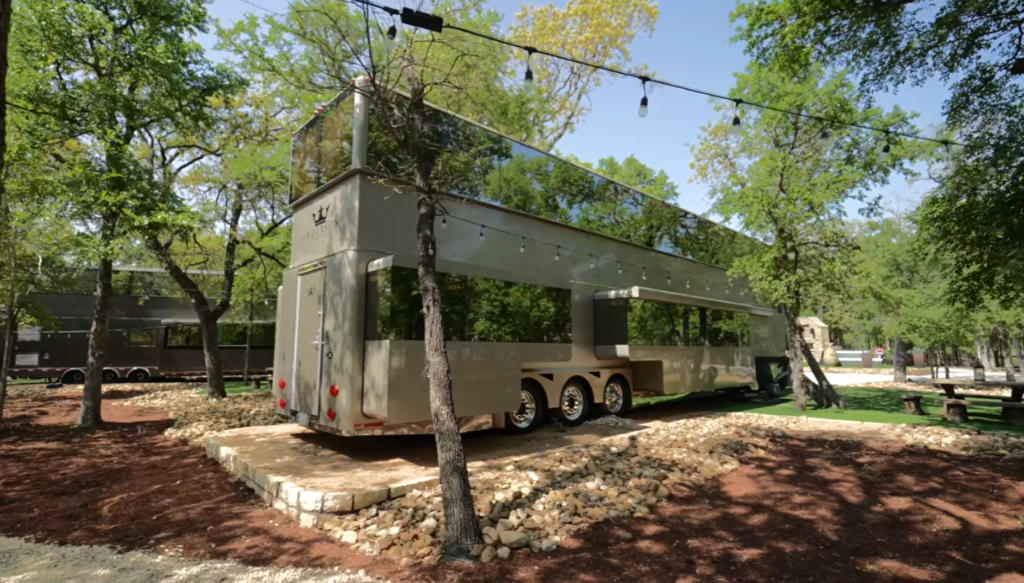
Make sure to clean your RV before storing it for an extended period of time. This will help prevent any damage from occurring while it’s in storage.
Camping
Camping in an RV can be a great way to see the country and spend time with family or friends.
Most RVs are between eight and nine feet wide, but there are some that are wider. The width of your RV will affect where you can take it and how easy it is to park.
Here are a few things to keep in mind when you’re thinking about the width of your RV:
- The widest part of an RV is usually the mirrors. When you’re measuring your RV, make sure to include the mirrors in your measurement.
- The length of your RV will also affect its width. A longer RV will be wider than a shorter RV.
- The type of RV you have will also affect its width. A travel trailer is usually narrower than a fifth wheel, for example.
What is the Best RV Size?
When it comes to choosing an RV, size definitely matters. But how do you know what size is right for you? Here are a few things to consider when deciding on the best RV size for your needs.
- How many people will be traveling with you?
- How much stuff do you need to bring along?
- What type of roads will you be traveling on?
- Do you want a slide-out or not?
All of these factors will play a role in determining the best RV size for your needs. So, let’s take a closer look at each one.
FAQ
How wide is a normal RV?
The average RV is eight feet wide, but some RVs can be as wide as 13. Some trailers are even narrower, at around five or six feet. [4]
How long and wide is an RV?
RV width can range from just under seven feet to over 12 feet. The average RV is about eight and a half feet wide, but there are many different types and sizes of RVs on the market. Some RVs are even wider than 12 feet! [5]
The width of your RV will affect how easy it is to maneuver and park. It’s important to know the dimensions of your RV. Here are a few things to keep in mind when considering the width of your recreational vehicle:
- Type of RV: The type of recreational vehicle you have will affect its overall width. For example, fifth wheels tend to be wider than travel trailers.
- Slide outs: Many RVs have slide outs, which can add to the overall width of the vehicle.
- Towing capacity: The width of your RV will also affect how much weight it can tow. Heavier RVs will need a wider turning radius, so keep this in mind when planning your route.
- Parking spaces: Make sure you know the dimensions of any parking spaces you’ll be using. Some campgrounds and RV parks have limited space for larger vehicles.
How wide are most campers?
The average RV is eight feet wide, but there are many different types and sizes of RVs on the market. Some RVs can be as narrow as six feet, while others may be up to 12 feet wide. The width of your RV will depend on the type and size of recreational vehicle you choose. [6]
When deciding how wide your RV should be, consider the following:
- The size of your family or group
- How much gear you need to bring
- The type of camping you plan to do
- Your budget
If you are planning to camp with a large family or group, you will need a wider RV so everyone has enough space. If you plan to bring a lot of gear, you will also need a wider RV. And if you are planning to do some off-roading or boondocking, a narrower RV may be a better option so you can navigate tighter spaces.
Of course, your budget will also play a role in how wide your RV is. Wider RVs tend to be more expensive than narrower RVs, so keep that in mind when making your decision.
What is the widest width of an RV?
The widest width of an RV is 102 inches. This is the maximum width that an RV can be without a special permit.
Useful Video: RV Length – What You Need To Know
Conclusion
RVs come in all different shapes and sizes, so there’s no one answer to the question “how wide is an RV?” But in general, most RVs are between eight and nine feet wide. The widest RVs can be up to 102 inches wide, but these need a special permit to operate on roads. When planning your next road trip, make sure to check the width of your RV against the width of bridges and roads before you travel. Happy travels!
References
- https://scanneranswers.com/travel-trailer-and-rv-dimensions/
- https://tinyhousedesign.com/how-wide-are-rvs-on-average/
- https://www.rvia.org/advocacy/policies/dimensions
- https://rvblogger.com/blog/rv-width/
- https://campergrid.com/average-rv-length-width/
- https://camperreport.com/average-width-of-a-travel-trailer-with-11-examples/

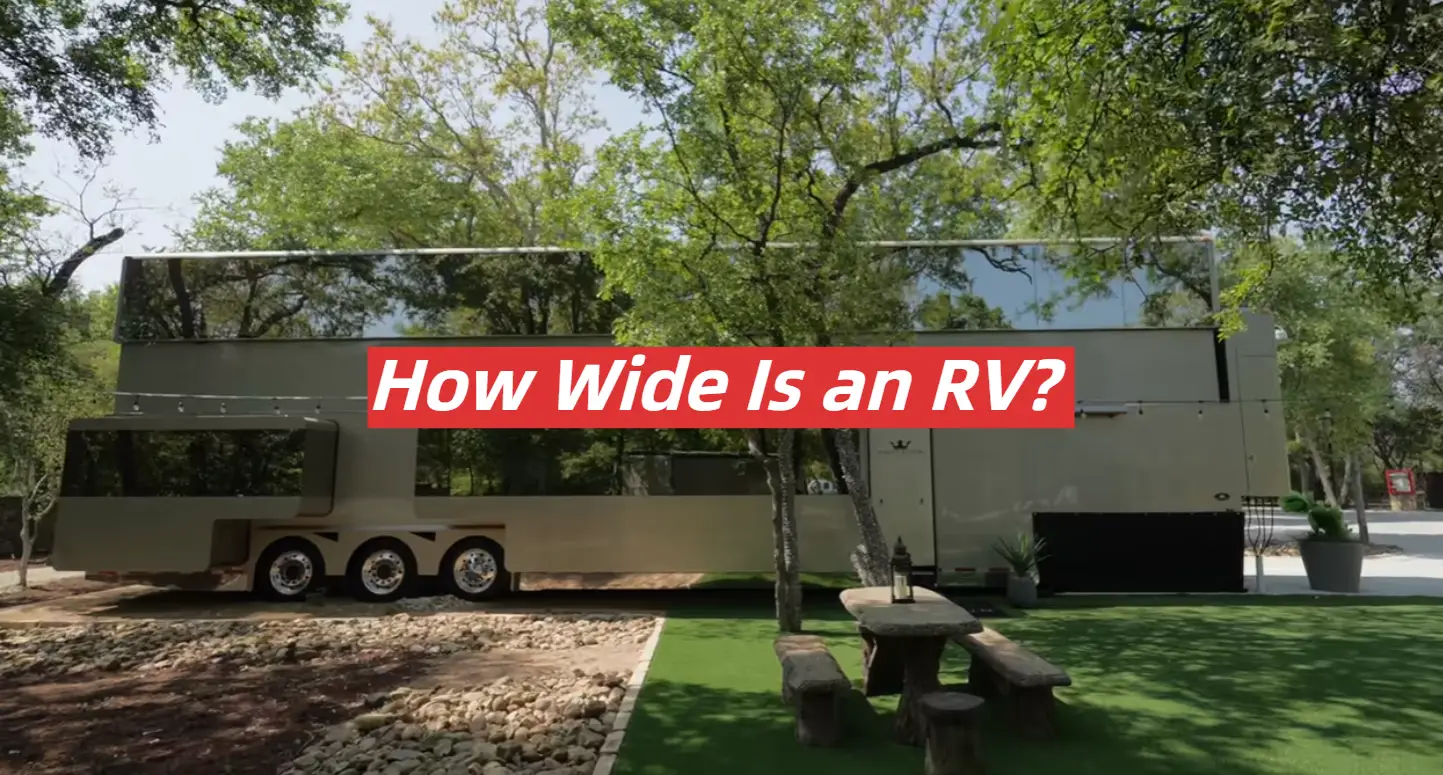

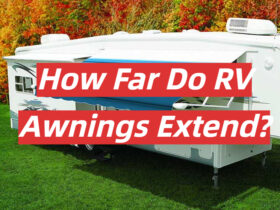

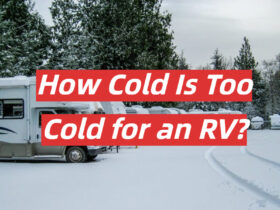
Leave a Reply